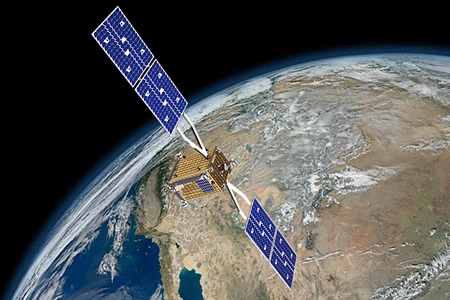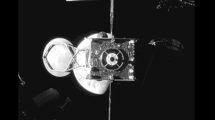
NASA has announced progress on a plan to enable the commercial inspection of defunct satellites in low Earth orbit, a critical step toward future satellite repair or removal. The agency has awarded Seattle-based Starfish Space a $15m Phase III Small Business Innovation Research (SBIR) contract to complete the Small Spacecraft Propulsion and Inspection Capability (SSPICY) mission over the next three years.
The SSPICY mission aims to address the growing issue of space debris, a key element of NASA’s Space Sustainability Strategy. By inspecting non-operational satellites, NASA seeks to mitigate risks associated with orbital debris, which poses a threat to human spaceflight and other missions.
Speaking about the mission, Bo Naasz, senior technical lead for in-space servicing, manufacturing, and assembly in NASA’s Space Technology Mission Directorate, said: “The SSPICY mission is designed to mature technologies needed for US commercial capabilities for satellite servicing and logistics or disposal. In-space inspection helps us characterise the physical state of a satellite, gather data on what may leave spacecraft stranded, and improve our understanding of fragmentations and collisions, a difficult but critical factor in a sustainable space operating environment.”
Starfish Space’s Otter spacecraft will lead the effort. About the size of an oven, Otter is designed to inspect, dock with, and service or deorbit satellites. Equipped with an electric propulsion system, Otter can efficiently visit multiple satellites, advancing technology for rendezvous and proximity operations.
During the SSPICY mission, Otter will visit and inspect multiple US-owned defunct satellites that have agreed to be visited and inspected – a challenging task, as satellites move quickly and are kept far apart from each other for safety. Otter will approach within hundreds of meters of each satellite to conduct inspections during mission operations. During the inspection, Otter will gather key information about each of the debris objects including their spin rate, spin axes, and current conditions of the objects’ surface materials.
The SSPICY mission is the first commercial space debris inspection funded by NASA and supports the agency’s efforts to extend the life of satellites while reducing space debris. Satellites that are no longer in use can break apart or collide with one another, creating debris clouds that pose risk to human spaceflight, science and robotic missions in Earth’s orbit, and missions to other planets in the solar system. Data from inspections like those planned during the SSPICY demonstration will play a critical role in understanding the nature of defunct satellites and advancing solutions for reuse or disposal.
Trevor Bennett, co-founder of Starfish Space, added: “We are excited to expand our partnership with NASA, building on our shared commitment to advancing in-space manufacturing and assembly capabilities. It’s an honor for Starfish to lead the first commercial debris inspection mission funded by NASA. We look forward to collaborating on this and future satellite servicing missions to enable a new paradigm for humanity in space.”
The Otter spacecraft is expected to launch in late 2026 and will begin performing inspections in 2027.
The SSPICY demonstration is funded and managed by NASA’s Small Spacecraft Technology programme based at NASA’s Ames Research Center in California’s Silicon Valley. The award is enabled by NASA’s SBIR programme, which is open to US small businesses to develop an innovation or technology. These programmes are part of NASA’s Space Technology Mission Directorate.














Add Comment